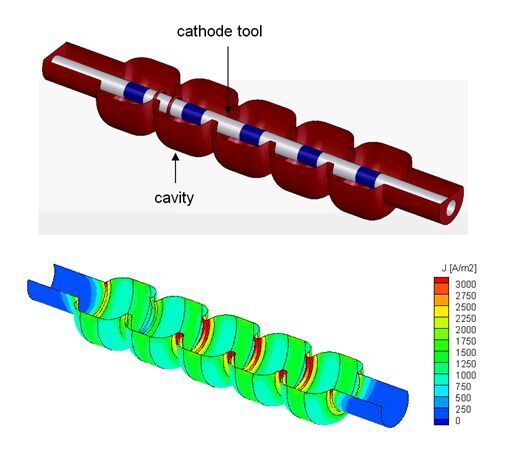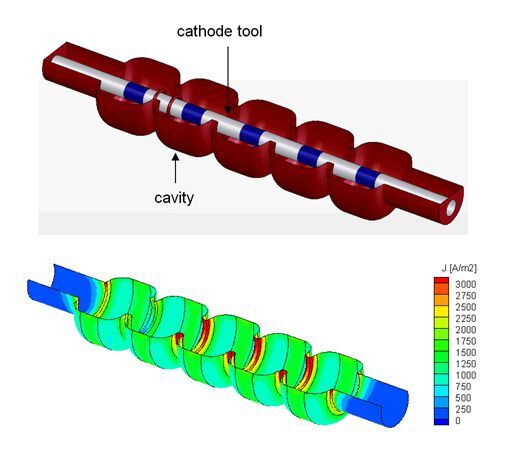
Nb Accelerators
The performance of superconducting radio-frequency (rf) cavities depends upon the surface roughness of the nobium surface, since the latter has a direct impact on the magnetic field amplitude that can be generated by the accelerator.

The performance of superconducting radio-frequency (rf) cavities depends upon the surface roughness of the nobium surface, since the latter has a direct impact on the magnetic field amplitude that can be generated by the accelerator.
The electrolyte being used for electro-polishing these cavities is a mixture of sulphuric acid and hydrochloric acid. By defining a tubular cathode tool that is partially activated, in combination to ring shaped current robbers, the current density distribution over the internal surfaces of the cavity is far more uniform than what could be achieved by a fully active tubular cathode.
For practical reasons the cavity will not be filled completely with electrolyte and is slowly rotated during the electropolishing process.

